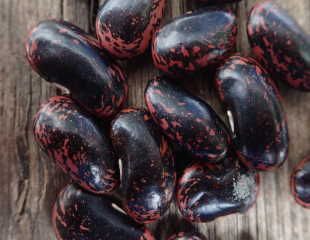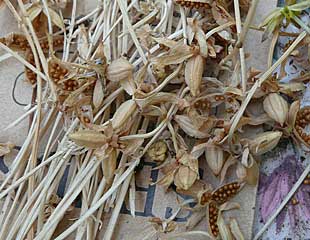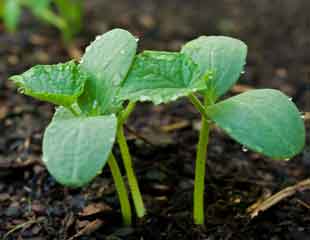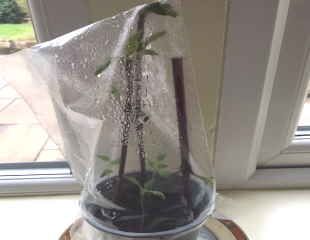


10 Top tips on how to sow and germinate seeds
- All seed packets have a "use by date" but this may not be definitive. Seed will last longer if stored in a cool dark place (such as a fridge,) between growing seasons. Try last year's seeds first, as many seeds will keep over the winter and be viable in the spring. If you sow old seed and germination fails, sow again with fresh seed.
- Unfortunately seeds can get diseased, the most common problem is "damping off". This is caused by several pathogens which can be air borne but are often caused by unclean seed trays, containers and gardening tools which carry the pathogen. Best growing conditions are clean containers, fresh compost and plants which are warm and not over-watered. Damping off will cause seedlings to look thin, poorly developed, and die. It is also more common in low light levels.
- Compost is very important. Sow into a multi purpose compost which has been gently watered before sowing. It is best to water first because watering after sowing can cause the seeds to move, so they bunch together and come to the surface. Do not let the compost dry out after sowing/germination, but equally take care not to over-water, which is a common cause of seedling failure. Early in the season compost can be cold, having been stored outside. Bring the compost into the garage, greenhouse or conservatory to warm before using.
- Sow into individual pots or trays well spaced, and with small seed as finely as you can. Check the seed packet for the sowing depth because not all seeds are sown to the same depth. Sowing finely makes it easier to prick out the seeds later; if they are all bunched together, it is very hard to separate them. It is best not to mix seeds in the same seed tray because they will germinate at different times, which will cause a problem if you are sowing early in the year and using a propagator, (as in, you cannot take half a seed tray out of the propagator.)
- If you are sowing members of the bean family (peas, runners, broad or French beans, which also includes Sweet Peas) sow into deep containers as they need a long root run. Sow the seed towards the top of the root trainer so the roots have plenty of downward space to grow into. You can use loo roll holders but take care when watering not to saturate the tube or it will go black and disintegrate.
- If you are sowing early in the year, the seeds somewhere warm to germinate, a sunny windowsill, spare bedroom or conservatory are ideal and a heated propagation mat is a great help.
- Most seeds like a warm temperature and slightly damp environment to start off, and a propagator is ideal. If you do not have a propagator, you can make one see below.
- Once the seedlings have emerged and become a little established, take them out of the propagator or remove the bag. This is because if the seedlings remain in the warm muggy atmosphere they will become soft and sappy (see image below) which does not make for good plants.
- Light is crucial; if you are growing seedlings in a room where the light is predominantly from a source as in on one side, such as a windowsill, porch, conservatory, it is important to turn the pot regularly, ideally every day, otherwise the seedling becomes spindly. If this occurs, repot the seedling, burying it deep with a good bit of the spindly stem in the pot under the soil level, and it will grow on well what to do about weedy seedlings.
- There is a big difference at which temperature seeds germinate, for example lettuce will germinate at 5C, whereas runner and French beans, and sweetcorn need 15C, as do courgettes and cucumber, (although greenhouse varieties need at least 21C). Broad beans and most Brassicas will germinate at 8C, Carrots 10C and chilli and squash a whopping 21C. Bear this in mind in terms of early sowing when it is cooler. When sowing early and start with seeds which germinate at a low temperature and are more hardy.
How to make a homemade propagator
Using an individual pot, fill it with compost, a few seeds and moisten. Stretch a polythene bag around the pot. Some small bags fit gardening pots well. It needs to create a tight seal, so if the bag is larger than the container, use a rubber band or tie to seal it.
Ideally you do not want to bag to rest on the small seedlings, to prevent this you can use a small pea stick to prop up the bag. This will work well for many seeds.

